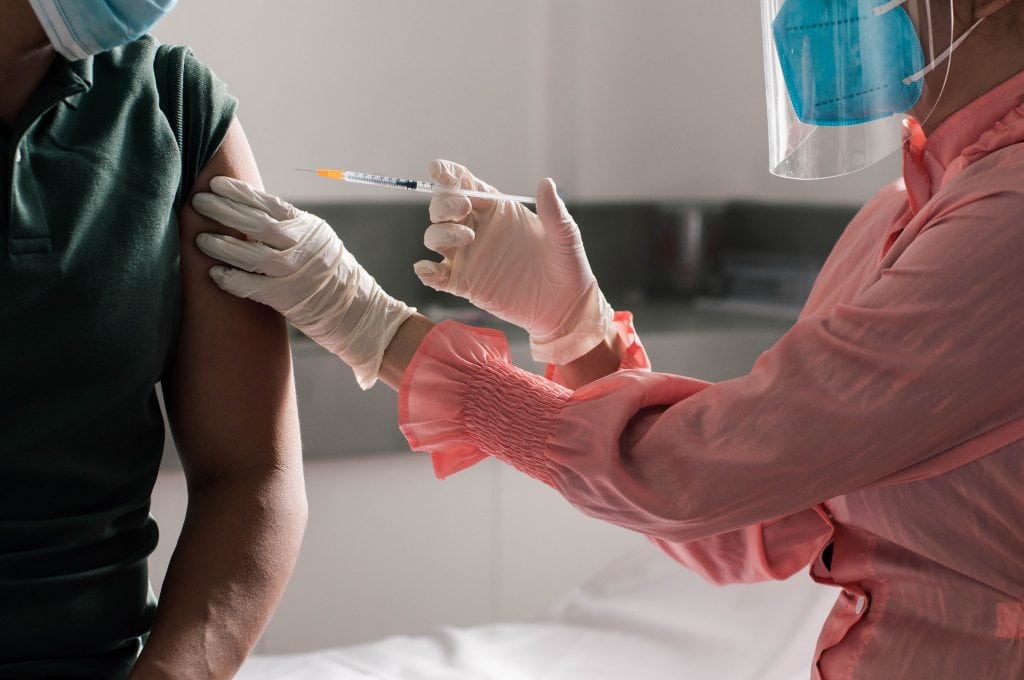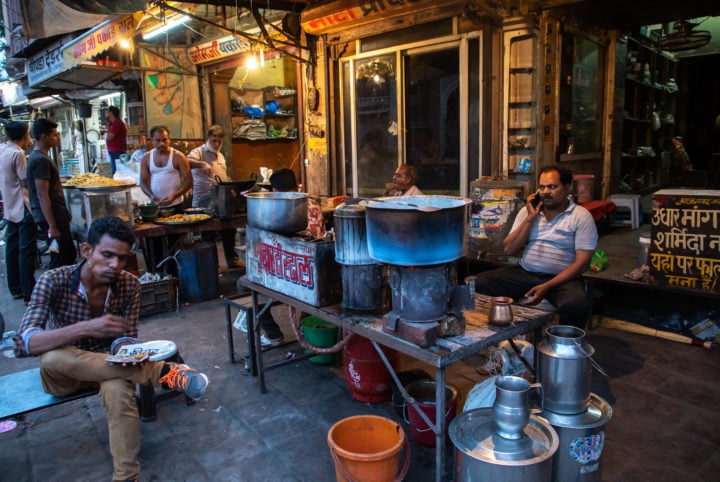
Members of close-knit ethnic communities who resisted vaccinating against COVID-19 changed their minds when the virus struck close to home.
The rising trend of vaccination refusal and hesitancy is raising serious concerns among public health officials around the world.
Even though the rapid development and roll-out of the COVID-19 vaccines was a major breakthrough in the global fight against the pandemic, vaccine take-up has since then been far from universal, especially among racial and ethnic minorities and even in countries with ample supply.
Why did the initial enthusiasm peter out? Understanding what drives the decision of resisting vaccination is imperative for effective public policy.
A new study from Monash Business School provides evidence that providing local information about deaths helps spur ethnic minority groups to participate in the vaccination program.
Using UK data on local vaccination rates and COVID-19-related deaths, Professor Yves Zenou from the Department of Economics explains that ethnic communities are more tightly connected, so when a community member falls victim to the disease, the news spreads quickly and has a strong impact on other community members.
“In other words, social proximity to victims of the disease can trigger an urgency to take protective measures against it,” Prof Zenou says.
Along with co-authors Profs Corrado Giulietti and Michael Vlassopoulos from the University of Southampton, he considered what factors were likely required for people to seek protection against COVID-19.
“We examined whether a local shock, such as the number of COVID-19 deaths in a person’s local area, shows the severity of the disease and encourages them to get the vaccination,” he says.
Changing minds on vaccine hesitancy
Professor Zenou says the vaccination decisions against COVID-19 offer a uniquely suitable setting to study the extent to which people change their decisions when facing hard facts around a high-stakes issue.
“These decisions have serious consequences for decision-makers, as they concern a new and highly infectious virus with a non-negligible risk of hospitalisation or death and unknown long-term effects,” he says.
The World Health Organization has identified persistent vaccine hesitancy as a major public health issue.
“Vaccine hesitancy has been attributed to various factors, including low perceptions of health risks associated with the virus or concerns about the side effects of the rapidly developed vaccine,” Prof Zenou says.
“Often, these beliefs are fuelled by misinformation around COVID-19 that circulates abundantly in social media or through one’s social networks and which undermines trust toward health authorities and science.”
Encouraging people to vaccinate
The researchers started with a question: What information would convince COVID-19 sceptics to vaccinate?
If the processing of evidence is distorted by (mis)information that confirms one’s beliefs while suppressing information that contradicts them, then it is unlikely that scientific facts will be very effective.
By contrast, sceptics or those who are hesitant might be alarmed if they receive news through their social networks that people close to them fall ill seriously or die from the disease.
“This type of hard evidence is more likely to lead sceptics to change their minds and vaccinate. A similar phenomenon was observed during the AIDS pandemic where behaviours that prevented transmission were more likely to be adopted in areas with a higher prevalence of cases and when one knew someone who had died of AIDS,” Prof Zenou says.
“Although various anecdotal media reports during the COVID-19 pandemic corroborate the view that close exposure to victims’ changes attitudes toward vaccination, to the best of our knowledge the issue has not received systematic empirical scrutiny.
“Then, we investigated whether social proximity to victims underpins the impact of mortality on vaccination. This is because we know that social networks can suppress the spreading of a contagious disease by raising awareness and promoting protective behaviour,” he says.
Would these groups be swayed by information?
To examine this, they asked whether members of ethnic minority groups – who are on average more vaccine-hesitant – would be swayed more strongly by information about deaths that occur in their local area.
These groups included white and Black Caribbean, white and black African, white and Asian, other mixed, Indian, Pakistani, Bangladeshi, Chinese, other Asian, African, Caribbean, Other Black and Arab.
“We expected this to be the case because ethnic minorities are close-knit communities in which social cohesion and network ties tend to be stronger compared to those among the white majority,” Professor Zenou says.
“So, the information about a community member’s death is more likely to circulate more quickly and efficiently among ethnic communities.”
That is, ethnic minorities who live in localities with a higher presence of their own-ethnicity people are more likely to be exposed to news about a COVID-19-related death that has occurred within their community.
“We found that the share of ethnic minorities in a locality is negatively associated with vaccination rates. The localities with a large share of ethnic minorities increase their vaccination rates as they get more exposed to COVID-related-deaths,” he says.
And the larger the death rate shocks, the stronger effects on boosting vaccination rates.
Professor Zenou says the results are also robust to a battery of sensitivity and robustness checks where we consider alternative functional forms, definitions of ethnicity, and measures of vaccinations and COVID-19 deaths.
“Our findings suggest that to encourage vaccination among hesitant groups, vaccination campaigns should aim at facilitating the discussion of information among members of highly hesitant groups at the neighbourhood or community level,” Professor Zenou says.
“This could be achieved, for instance, by mobilising influential members of these communities (such as community leaders) or families of patients and victims.”


